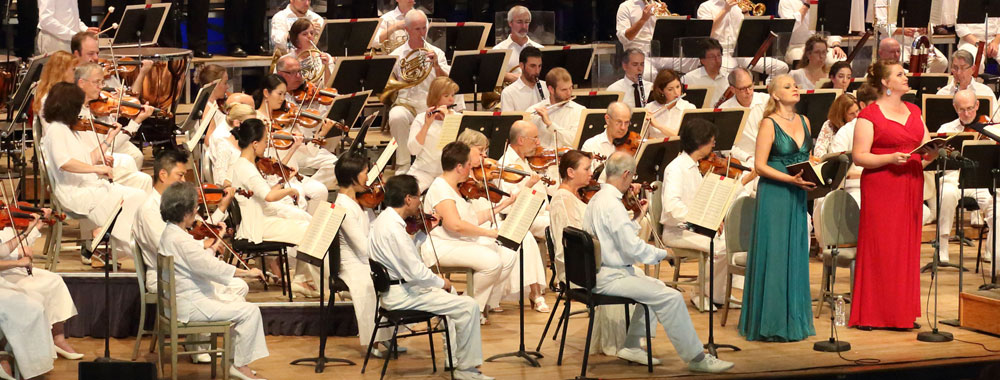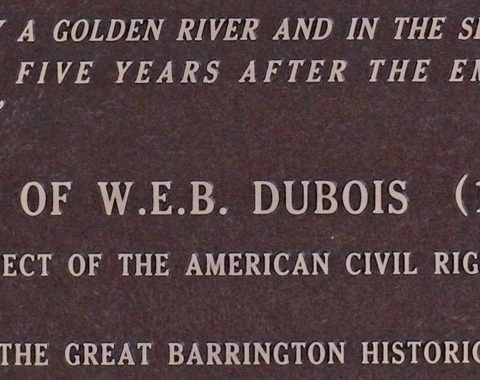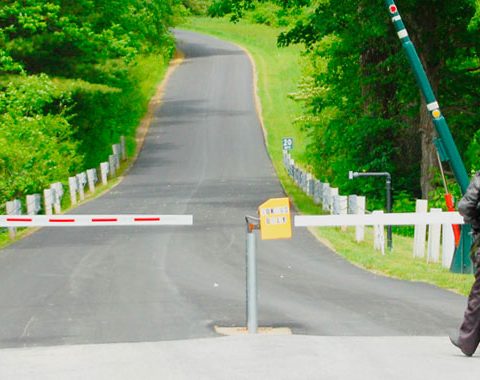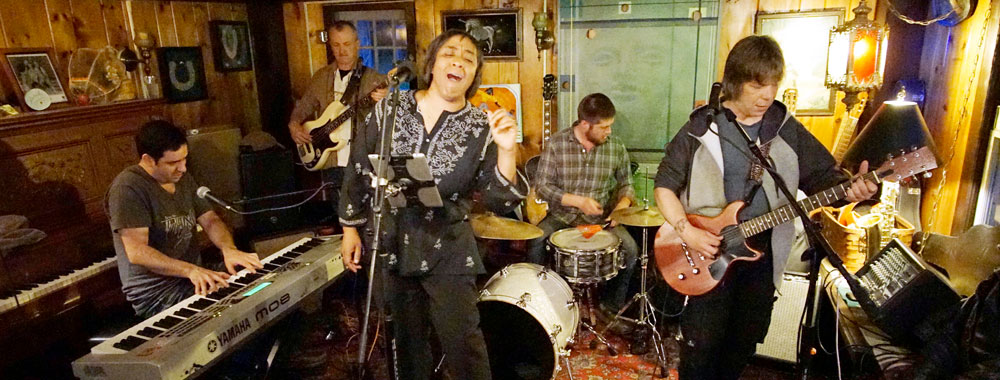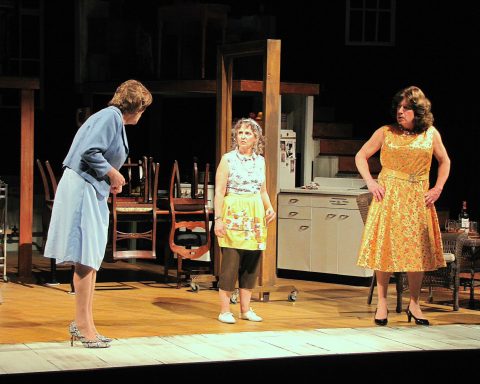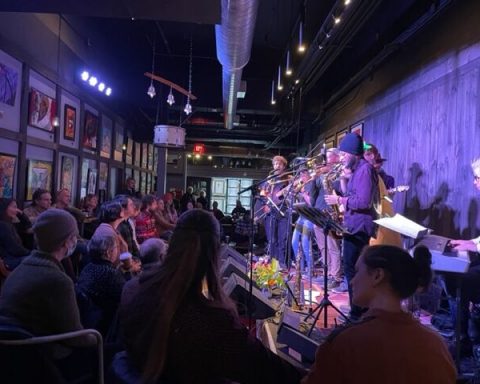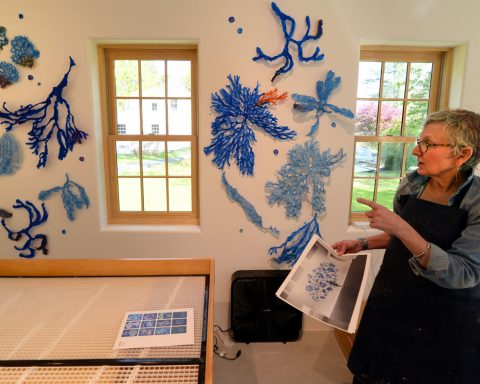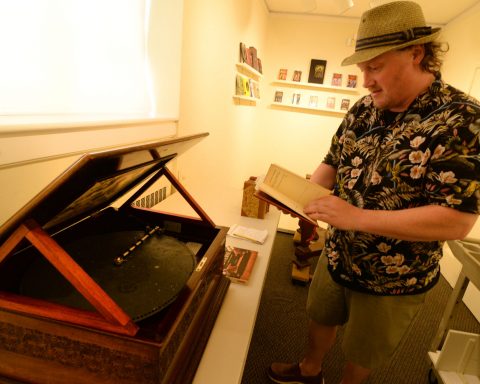By Andrew L. Pincus
A Tanglewood moment: The Boston Symphony Orchestra is playing Tchaikovsky’s beloved “Pathetique Symphony.”
The third movement, a march, swirls to a fiery conclusion, and much of the audience erupts in applause and begins streaming toward the exits.
But wait. It’s not over!
There’s a fourth movement — a movement soaked in grief. The opening is lost amid tittering and confusion as listeners head guiltily back to their seats.
Disruptive, yes. It happens every time the “Pathetique” is played, which is a lot.
Audiences are fired up by fast and loud. But there’s a bright side, too.
The response shows there are many neophytes in the crowd. They have been introduced to not only the “Pathetique” but also the pleasures and rewards of classical music.
Walk in the Main Gate on a BSO concert afternoon or evening, and you see them: the crowds lounging on the lawn with food and drink spread — often lavishly — before them, the music wafting over them like a summer breeze. It’s tempting to make the BSO’s offerings, like the lush setting amid lake and hills, background for a picnic. But the more you put into classical music, the more you’ll get out of it.
Unlike a pop song, which plays with a single idea for three or four minutes, an opera or classical piece can last for hours and encompass joy and sorrow, earth and heaven, with many stages in between. And Tanglewood, because of its informality, is a place to listen, learn and meet the masters.
Consider the work that opens the BSO’s Tanglewood season on July 7, taking up an entire program: Gustav Mahler’s Symphony No. 2, “Resurrection.”
Fanfares, echoes of nature and scenes of village life appear and reappear though its five movements. The first movement is a gigantic march, the second a country dance, the third a sardonic joke. The music then shades into mysterious song, invoking eternal life. The finale, half an hour long, builds to a thunderous climax in which a chorus (usually about 120 strong at Tanglewood), an enlarged symphony orchestra and pealing organ and bells affirm the glory of resurrection. It is classical music at the max – also, a thrill like no other.
Turn your smartphone off and put it away. Don’t leaf through the ads in the program book. You can prepare yourself for a concert by reading up on the music and listening to recordings. But the main thing is to open your ears.
Classical works don’t just ramble. They have definite forms and themes — sentences and paragraphs, switches of mood, ideas that disappear and return, transformed. Whether you’re conscious of them or not, these devices both unify a work and give it variety and breadth of expression. The fateful knocking at the door that opens Beethoven’s Fifth Symphony keeps coming back — ominous, wary and, finally, triumphant.
Classical music can also be light ‘n’ easy; think of Vivaldi’s “The Seasons.” That overworked set of violin concertos strips the form down to essentials. The piece is overworked precisely because, like larger compositions, it lifts the listener out of everyday experience.
I’ve covered Tanglewood as a critic 41 years (“Too long!” someone yells). Of the outstanding performances I’ve heard in that time, two particularly come to mind: Britten’s monumental “War Requiem” and the last three piano sonatas of Beethoven and Schubert. (The sonata programs were actually separate but shared a performer and a transcendental quality.) Great performances like these become like a religious or mystical experience.
The “War Requiem” stands out because of its powerful antiwar message, driven home by conductor Seiji Ozawa, a Japanese who felt the Hiroshima horror personally. In the sonatas, pianist Paul Lewis searched out meaning after meaning in music that, though written for a single instrument, is bottomless in its emotional and even philosophical depth.
A good performance requires, first of all, technical skills: the ability to project the notes and communicate a vision to fellow musicians. But something more is happening. Musicians sometimes call it “the music behind the notes.” It’s an intuitive thing, a gift. Leonard Bernstein had it. He possessed an uncanny ability to make music jump off the stage as something breathing, alive, incandescent.
So, what does a critic look for (that is, listen for) in a concert?
First of all, he or she goes to concerts like anyone else, looking for enjoyment. That can come in the soaring heights of a “Resurrection” symphony, the challenge of a new work or the simple pleasure of a Mozart divertimento. The step a critic (presumably knowledgeable) takes that others don’t is to try to figure out whether and why a piece of music or performance is working.
The touchstone here should not be the critic’s personal preferences, but — as best he or she can tell — how well the composer and performer have realized their own intentions. It can be tricky. A poor performance can mar a great work, while a fine performance can make a lesser work sound better than it is. In the end, the judgment is both objective and subjective. Ideally, it should give the reader food for thought.
We talk as if there’s one Tanglewood. That’s true in a sense. Tanglewood is the only music festival that has a major symphony orchestra in residence for eight weeks, teaching as well as performing. But within this kingdom there are many duchies.
The BSO and its following are most conspicuous, of course. But there is also, first of all, the Tanglewood Music Center, the BSO’s illustrious academy, which has sent thousands of soloists and orchestra members out into the world.
There is Ozawa Hall, where students perform and a distinguished chamber series takes place. There are the Pops and Popular Artists concerts, which draw a separate crowd. There are the worlds of picnickers, hard-core music buffs, tourists, VIPs, socialites, volunteers, critics and so forth. There are kids’ events.
Tanglewood, that is, is democratic and diverse. And, of course, part of the appeal being the small-town Berkshire setting, don’t forget the thunderstorms and traffic jams.
“Be embraced, ye millions!” Beethoven shouts in the Ninth Symphony’s climactic “Ode to Joy.” The exhortation, coming each year as the BSO’s final utterance of the season, could be Tanglewood’s slogan. The blend of nature and music can be intoxicating, mellowing you out and tempting you to daydream. We all do it.
But if you daydream just right, letting nature become music and music become nature, the experience can be as big as all outdoors. Call it hanging out with the gods and masters.
Andrew L. Pincus is The Berkshire Eagle’s classical music critic and the author of five books, including three about Tanglewood and musicians associated with it. As a freelance writer, he has written for The New York Times and other publications.
